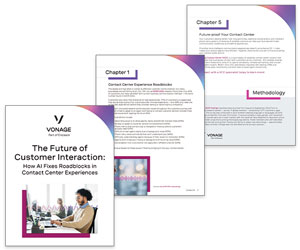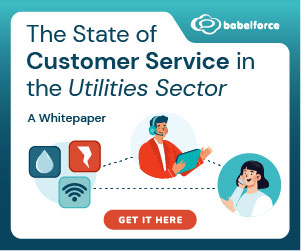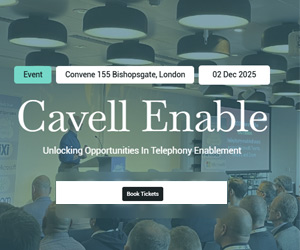We asked researcher Richard Snow for his predictions for what the future will look like in five years’ time. Will it be the same as today, or will it be very different?
I have worked for nearly 20 years in the contact centre market, 15 as a system integrator building centres and 5 as head of research into contact centre performance management with Ventana Research. In that time I have seen many changes, but it has to be said that an awful lot remains remarkably similar to 20 years ago.
However, I now sense a sea change is happening.
One of the major things to come out of the credit crunch is a renewed focus on the “customer” and a realisation that if customers aren’t treated properly at every touch point – including the contact centre – then there is a high risk they will defect to the competition.
Secondly, the available technology and applications are undergoing a fundamental change with new, innovative products coming to market quite regularly and more and more companies turning to cloud-based solutions to enhance their centres.
What is holding companies back?
1. A lack of change
I’d like to go along with the popular opinion that it is to do with lack of investment budgets. However, my research points to the fact that it is as much to do with lack of drive to change. Contact (or call) centres have been in existence now for 20+ years, which means there are already established ways of doing things and a considerable amount of legacy technology in place.
Despite all the talk of companies becoming “customer centric”, how many have really bitten the bullet and put the necessary process, people and technology changes in place?
2. Operating budget is allocated to keep existing systems running
That said, investment budgets are naturally a big issue. My recent research shows that for over three-quarters of companies 90 per cent or more of their contact centre operating budget is allocated to keep existing processes and systems running. This means the majority of available funds are taken up meeting the ongoing costs of agents, maintenance and upgrade costs of hardware, and maintenance costs of licensed products.
3. Lack of awareness
The third thing I think is holding companies back is lack of awareness. Running a contact centre includes a large amount of time fire fighting – agents going sick, queue lengths getting too long, customer issues going unresolved – and this prevents managers sitting back to find out what is available on the market and how some of the new products could help them improve performance and the service provided to customers.
What have been the major changes?
By far the biggest change I have seen is the investment in VoIP. Over the last five years I have seen penetration of VoIP networks in contact centres increase from less than 30% to just over 50%. Sadly this growth has been largely fuelled by the desire to reduce telephony costs, and as yet I don’t see many companies making full use of the additional features VoIP supports.
The second largest growth area has been in the deployment of IVR and web-based self-service. Once again, unfortunately, these haven’t delivered the expected improvement in customer service, with lots of customers giving up their attempts to use both and calling the contact centre.
The contact centre of the future
All the evidence I have outlined above suggests things won’t be too different. Indeed the same research shows the most likely investments over the next couple of years are likely to be VoIP, agent workforce optimisation and even more CRM systems. However, as I outlined in my opening remarks, two things give me hope – the increasing power of the customer and cloud-based solutions.
It is increasingly apparent that customers are just one call, or click away from defecting to the competition. This means that what counts is customer service, and more particularly the customer experience; and companies are beginning to realise this with over 70% of respondents to my latest survey indicating they need to improve the way they handle customer interactions.
Multi-channel
This should lead to more investment in technology that will support the new channels of customer choice – chat, text messaging and video – and into more applications that can personalise the way one-to-one and web-based interactions are handled.
Smart Desktop Technology
I therefore expect to see more centres using smart desktop technology from vendors such as Cincom, Jacada, eglue, SmartPoint, and companies deploying smarter web-based self-service systems from the likes of eglue, RightNow, and SwordCiboodle. You might also expect more use of natural-language-based search engines from vendors such as Exalead, Numero and Queplix to uncover key customer information to help personalise responses.
In the Cloud
However, I see the biggest change will be that more companies will handle customer interactions “in the cloud”. Cloud-based solutions offer the answer to several challenges companies face as they try to upgrade their contact centres:
- Reduced capital spend – no need to spend on servers, software licences, annual maintenance fees or technical support staff
- Ease of use – cloud-based applications have typically been developed using similar principles to Internet Explorer and Google, making them easier to use by agents and customers
- Integration – one of the biggest challenges creating a multi-channel contact centre is gluing the component parts together. Companies in the future will be able to buy pre-integrated solutions from vendors such as Five9, Interactive Intelligence or LiveOps, or they will find that like-minded vendors of cloud-based solutions have made them much easier to integrate with similar solutions. Saleforce.com is one vendor that has gone one step further and provides a complete development environment to create easily integratable applications and/or partner-developed applications
Social Media
Social media – one important change is the growth of social media sites that are used by customers when they can’t get answers direct from a company. Vendors such as ResponseTek, SFDC and SPSS (soon to be part of IBM) are leading the way in allowing companies to integrate these sites into their total customer interaction handling strategies.
If the past 20 years is anything to go by, then I would have to predict that in 5 years’ time contact centres will be pretty much the same as they are now. But with the growing awareness of the importance of the customer and the emergence, and hopefully adoption, of these and other new technologies, then at least customers will get a better experience and companies will achieve better business results.
Do you agree with Richard’s predictions for the future? Has he missed anything? Please leave your comments in an email to Call Centre Helper

Richard Snow
Richard J Snow is VP and Research Director at Ventana Research (www.ventanaresearch.com)
Author: Jo Robinson
Published On: 26th Aug 2009 - Last modified: 1st Sep 2025
Read more about - Expert Insights, Predictions, Richard J Snow







































My hope for the future is that the Contact Centre itself will become ‘virtual’ in that companies will take a serious look at homeshoring the work. This often overlooked option has a proven track record of reducing costs, giving staff more flexibility and providing the customer with a service they want rather than what the company merely offers – a perfect mix Happy Business + Happy Staff = Delighted Customers.
i think in future,agents will be able to login to systems remotely,vpn can come into play….that can cut call centres costs of transportation and food…agents can trace out a place in their homes and take calls.
Richard is spot on with his predictions around the growth of cloud computing and the hosted contact centre. Why spend $$$ on an on-premise solution that takes months to deploy and integrate and then be tied in to costly upgrades and maintenance, when solutions are available on a pay-as-you-go basis offering like or better functionality and unparalleled flexibility.
The concept of “Call Center” is already an anachronism. It conjures up the image of customer service agents crammed together in a customer service factory, highly mechanised, and more like battery chickens than free range. An environment exactly designed to break down trust between customers and the company, and the agents and the company.
I agree with Jackie. The future is both “virtual” and “deep support”. Companies will realise that quality and depth of relationship is everything. Those that don’t understand that will not survive. The use of automated voice systems will just hasten their demise. Technology will be able to detect which response solution and which agent is the most appropriate to meet a customer’s needs. Cultural affinity and shared values will be essential. So, yes, “home-shoring” is likely to be the next big wave.
I think Richard is spot on predicting where the contact center technology is heading ….. but the issue we are seeing is the lack of metrics measurement tools!